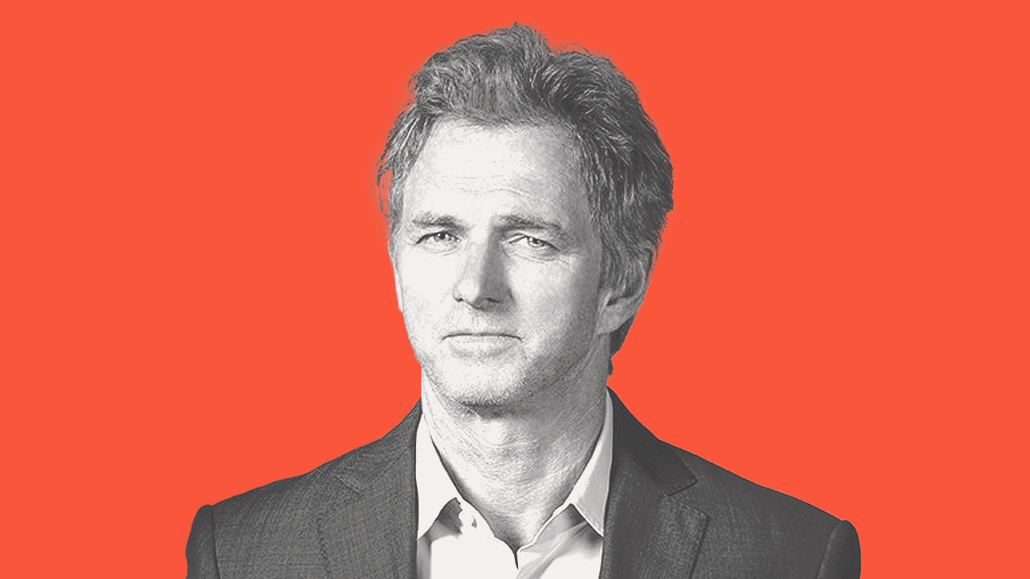NFL CMO Tim Ellis on why content creators are leading the league’s Gen Z-focused strategy

As this year’s NFL Draft is currently taking place in Kansas City, NFL CMO Tim Ellis wanted to bring a youthful energy and better connect with younger audiences. To do so, the NFL is hosting a three-day event showcasing the talent of current Gen Z content creators through on-site social activations.
During the NFL’s Draft, the NFL partnered with @Leon.Ond to surprise & delight deserving fans with his famous “Spin the Wheel” content; @SidetalkNYC captured footage of passionate fans during the draft; and @ThePeopleGallery captured highlights of prospects’ style on the red carpet. Meanwhile, video creator Lisa Nguyen (@LisaNguyen on TikTok) visited her favorite Kansas City restaurants to talk football and food. The goal for this is to connect with Gen Z NFL fans authentically while also leveraging its content creators to gain interest on the NFL Sunday Ticket.
This comes months after the NFL revamped its social media strategy with its NFL Content Creator Network to allow fans to directly engage with Gen Z football fans, such as Twitch streamer Esfand, who presented a showcase of the meeting of traditional athletes and gaming creators.
Digiday caught up with Ellis to learn more about what league intends to do to continue to attract and retain Gen Z viewers beyond the NFL Draft and their plans with their newly drafted players who are under current NIL deals.
This conversation has been edited and condensed for clarity.
From Las Vegas to Kansas City, were there any differences between how the NFL marketed the Draft this time around?
Hosting Draft in different locations lets us to spotlight the respective city and all it has to offer. For example, we are leaning into BBQ and highlighting some of the top pitmasters and BBQ spots in Kansas City. We also showcased the local culture through our Draft creative, which is displayed throughout various OOH installments in Kansas City. The vibrant street art, the exposed brick and the overall vibe of the city were really important for us to capture in all the creative designs for Draft.
This year’s Draft features Gen Z content creators for some of the activities. What was the approach with this strategy?
Gen Z is one of our priority target audiences, and we’re always looking for authentic ways to engage with them to continue growing our NFL fanbase. Creators are an important part of reaching this demographic. We generally target creators in strategic verticals – fashion, gaming, wellness and music – as well as those native to TikTok – specializing in humor, food, art, animals or endemic to football.
Talk about the AI activation part of this year’s draft. Why does it matter?
We’re excited to announce the first-ever partnership with [AI artist] Adrian Curiel, where we are creating an incredible AI-fueled backstage set at the NFL Draft. It promises to not only push the boundaries of creativity, but also deliver on our commitment to immediately unite top prospects with their new cities.
This approach is a testament to our dedication in utilizing the most cutting-edge tools while enhancing our helmets-off storytelling. Ultimately, Adrian will help us create over one hundred ultra-customized, dynamic pieces of art, using AI as the players are selected.
This directly ties back to our helmets-off strategy and allowing fans to get to know these players as interesting people as opposed to just world-class athletes. We use Draft as an opportunity to introduce prospects to NFL fans in a more human and authentic way. Who are they? What do they care about? What are their interests? Who are their loved ones? What’s their life journey?
Given the current economic climate, why is marketing still important to the NFL?
We know a strong marketing machine is integral for a brand to be successful. It has to be one that delivers relevance and relatability. We work hard at this every day and invest in our marketing accordingly. There is no off season. We engage our fans year-round, whether it’s Draft, Super Bowl, schedule release or Back Together Saturday. We are always looking for opportunities that bring joy and excitement to our fans, and we work to bring out the humanity of the game, telling stories that they care about.
As far as college football players, they have pre-existing NIL deals with brands. Will these be carried over once they join the NFL or would this be a conflict of interest?
Once prospects enter the league, they are free to have their own individual deals, either new ones or ones they carry over from college, as long as those deals don’t use league logos or marks.
There’s certainly a shift where fans are following their favorite players regardless of team, and for us, a lot of that is driven by our helmets-off strategy. Unlike other sports leagues, our players are constantly behind their helmets. My goal for the last few years has been emphasizing the personalities, goals and passions, highlighting who they are with their helmets off. I want our players to be relatable, which means removing the proverbial helmet and showcasing a more human face of the league, a league that authentically leans into youth culture and stands behind our players and what matters most to them.
More in Marketing

Chasing U.S. growth, Tony’s Chocolonely focuses on a retail media and social blend
Premium chocolate brand Tony’s Chocolonely is focusing on retail media and paid social as it targets U.S. growth.

The year the memes took over reality – and marketing followed
Subcultures aren’t niche anymore — they’re the culture. And for marketers, that changes everything.

How to expand programmatic advertising up the funnel, with TripAdvisor’s Matteo Balzani
TripAdvisor marketing exec Matteo Balzani broke down the company’s plans for broadening its programmatic strategy during a live recording of the Digiday Podcast at the Digiday Programmatic Marketing Summit.








